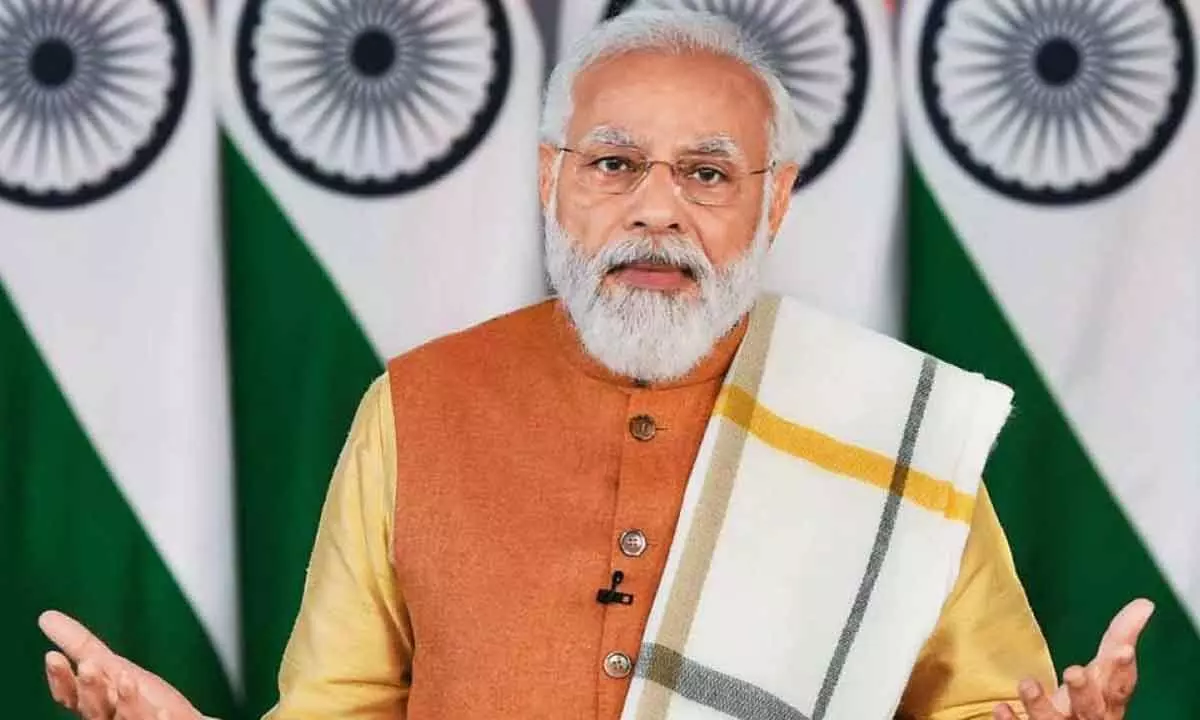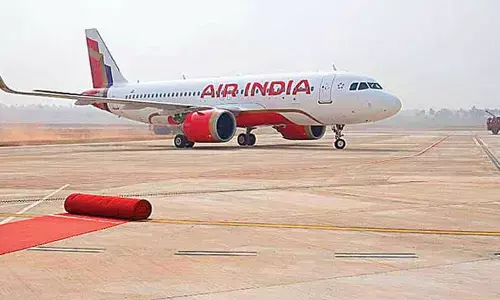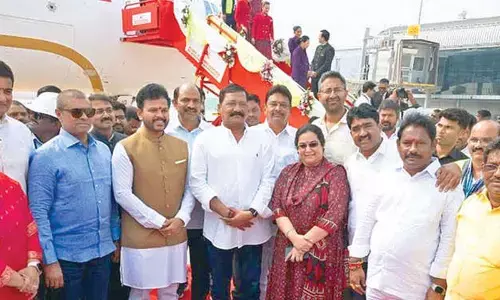NAMO 1.0 governance impact will be on 2023-24 Budget – I

Apart from the existing challenges, Brexit and European countries’ economy slowdown had been greatest challenges against our economy. Though the Narendra Modi government had been criticised over the Demonetisation and GST, facts were distinct as average GDP between 2009-10 and 2013-14 was on average around 6.7%, whereas it was 7.38% between 2014-15 and 2018-19. Add to it the implementation of welfare schemes such as Antyodaya for achieving inclusive sustainable growth. Welfare schemes and projects have been continuing uninterruptedly and will extending during the Namo 2.0 along with the additional programmes as per the time and situation demands. Most particularly, NAMO 1.0 governance influence exists on the upcoming budget
Every Budget is mutually exclusive and special in the most of the cases, but it connects from the past and to the future pertaining to the nation's finance like a going concern as perpetuity; it will have implied implications on nation's economy. This Budget 2023-24 will show the comprehensive and cumulative impact of 8 years of Narendra Modi administration on the future. Hence, I decided to analyse all important aspects in three parts for Budget 2023-24 and each article of these will have interconnected.
Upcoming Union Budget period will be concluded just before the 2024 General Elections. Hence, eagle eye focus exists on it from both ruling and opposition parties along with the appraisal of financial and economic analysts of domestic and International level will be their due to prevailing conditions, such as Ukraine war disruption of supply chain of goods and services, Global Economy slow down and Covid19 impact etc. Hence, next Budget cannot overlook all these aspects and as well as, Important Governance decisions of Prime Minister Narendra Modi-led Union government as it planned strategically NAMO 1.0 between 2014 to 2019 and continuing it along with new schemes and projects at present in NAMO 2.0 for basic needs and amenities for the poor and needed and pays attention for creating all kind of infrastructure facilities. As far as growth rate is concerned when Narendra Modi took charge as Prime Minister, it was 5.1% and 6.9% for the financial years 2012-13 and 2013-14 respectively based on 2011-12 prices as base year.
If we observe the sequence of the programmes of the Narendra Modi-led Union government from its inception, a perpetuity of schemes and programs appear as evident, such as, To achieve 100% ODF as the utmost priority, the programme was initiated on 2nd October, 2014 by the Union Government and sanitation had been covered under Swacha Bharath Mission (Grameen), up to 1,34,396 villages in our country had declared as 100% ODF as on 2nd December,2022.
Housing for poor under Pradhana Mantri Awas Yojana (PMAY) Urban as a flagship Mission of the Union government in urban areas commenced on 25th June 2015 and sanctioned 1.23 crore houses for the entire country till now with total investment of Rs 8.31 lakh crores, in which sanctioned fund by the Union government was for Rs. 2.03 lakh crores, out of which 1.3 lakh crore has been disbursed so far and Rs 1.07 crore houses have been grounded and construction of the houses have been completed to the extent of 65.5 lakh so far. It means more than 60% of works grounded has been completed.
PM Narendra Modi had announced Ayushman Bharath Pradhana Mantri Jana Arogya Yojana ( PM - JAY ) on 23rd September, 2018 with a motive to facilitate 10.74 Crore families consists of 50 crore individuals health cover for Rs 5 lakh per family to improve the quality health services for the BPL families, As on 31st March 2022, nearly 18 crore individuals had received Ayushman cards and 3.63 crore hospital admissions worth around Rs 40,000 crores from more than 25,800 Network of Empanelled Health Care Providers have been complied with. The Modi government took an initiation under PM Jandhan Yojana to open the bank accounts for those beneficiaries who avail government schemes and subsidies to connect their accounts for the transfer Direct Benefit of schemes in to their accounts, there was 47.51 Crore beneficiaries benefitted till 2nd December, 2022. As per the details, Amount of Rs. 26.02 lack Crores has been transferred under Direct Benefit Transfer since Financial Year 2014-15 to till 2nd December, 2022. Apart from this, Number of Loans under Prdhana Mantri MUDRA Yojana ( PMMY ) provided for 37.76 Crores till 2nd December, 2022 for non corporate micro enterprises up to 10 Lacks since 8th April,2015.
In addition to above, The government gave utmost "priority to assist for Farmers and Rural Bharath Development" simultaneously. It did bear as subsidy for more than Rs 4.5 lakh crore between 2014 to 2019 and thereafter due to abnormally raised prices of fertilisers by leaps and bounds, it has been forced to increase the fertilisers subsidy to Rs 83,000 crore, Rs 1.28 lakh crore, Rs 1.55 lakh crore and Rs 1.65 lakh crore subsidy for the financial years 2019 -20, 2020 -21, 2021-22 and 2022 -23 respectively for the quality and timely supply of fertilisers at affordable prices by neem oil quote for farmers without interference of black market. The Union government raised in MSP for agricultural produce for the benefit of the farmers as MSP for paddy fixed for Rs.2,040 per quintal for the year 2022-23, which is 50% higher when compared with the year 2014-15. As far as wheat is concerned, MSP for 2023-24 has fixed for Rs 2,125, which is 57.4% higher when compared with the year 2013-14 and MSP for Sunfower Oil seeds fixed at Rs. 6,400/- for the year 2022-23 with 71% increase. Further, Fasal Bhima Yojana for crop insurance registered more than 11.42 crores farmers since 2018 till 2nd December, 2022 and Rs 25,186 crore have been paid by the farmers as the premium, whereas Rs 1,25,662 crore have been paid to the farmers against their claims as on October 31, 2022 for last six years with Central and state governments bearing the maximum premium under this scheme. Apart from this, through PM Kisan Samman Nidhi Yojana Rs 6,000 per year for each farmer, a total of 11.37 crore farmers were benefited with Rs. 2.16 lakh crore subsidy in 12 installments till now.
To improve the rural connectivity infrastructure, a total of 3.38 lakh km length of roads have been sanctioned under PM Gram Sadak Yojana since 2014-15 and expenditure incurred for 1.72 Lack Crores for last 8 year. In order to provide rural guarantee employment Union government has been continuing MNREGA uninterruptedly and GOI had spent around Rs. 2.70 Lack Crore between 2014-2019, thereafter Rs 68,266 crore, Rs 1,11,671 crore, Rs 1,00,399 crore for 2019-20, 2020-21, and 2021-22 respectively. Further, Rs 73,000 crores allocated in the current financial year Budget 2022-23 with an aim to provide employment for 15.49 crore work force for 211 crore person days to benefit 5.38 crore rural households and it is expected to reach the programme outlay of over Rs 1 lakh crore in terms of actual payments by the end of the current financial year.
As per the National Food Security Act ( NFSA ), the Union government was released the Food Subsidy for the benefit of 80 crore BPL individual beneficiaries for Rs 5,54,871 Crores between 2014 and 2019 for the first 5 years of Namo 1.0 governance, where as it was 5,15,963 Crores between 2004 and 2014 for 10 years of UPA governance. It means Namo 1.0 government for 5 years spent on Food Subsidy was more than 10 years spent by the UPA government. Apart from above, 9.57 crore LPG connections under PM Ujjwala Yojana till 2nd December, 2022 for ease of cooking for women in BPL families, 2.82 crore households electrified under Saubhagya - Pradhana Mantri Sahaj Bijili Har Ghar Yojana with free metered connections for poor in villages since Oct, 2017 with a aim for 100% electrification of village households, 36.87 crore LED bulbs were distributed under Unnat Jyoti by Affordable LEDs for All (Ujala). Further, StartUp India has become a successful programme to encourage the upcoming entrepreneurs as Union government admits various benefits such as Lower Income taxes etc. Further, Post Demonetisation impact on finance can be analysed sensibly tracking the black money and control of counterfeit currency is evident as Bharath stood at No 1 position in the Digital Currency Transactions in the world and there has been significant growth in the filing the Income Tax Returns at record level. If we observe, implementation of the remarkable long-awaited GST has been yielding benefits to the nation as close to Rs 1.45 lack crore per month collection registers favourable growth. Both direct and indirect taxes collections have been reaching the targets favourably as per the estimations as the Narendra Modi government intends more reforms in taxation procedures for the benefit of the tax payers and so on as well as confidence reposed on Bharath among the mindset of the other nations and the brand image of Bharath in the international fraternity has become super positive due to successful strategic and diplomatic approach with other countries.
Prime Minister Narendra Modi always gives importance to qualitative human resources upgradation from primary education to till post graduation. The New Education Policy has been brought to upgrade the conceptual and technical knowledge and skills of the students at the choice of them to avail of option of medium including professional courses in the regional languages. Now a days, funds allocation to Samagra Shiksha Abhiyan & UGC is evident in the upgradation of infrastructure for schools, collages and universities to create an environment with best practices for the benefit of students. Prime Minister Narendra Modi's perception on Skill India and Digital India is for upgrading quality on a par with international standards and even much better for our products and services with Make in India as a model for generating the employment opportunities, subsequently all these have been useful for our Atmanirbhar Bharath.
Prior to Namo 1.0, there were global challenges that impacted the economy along with the compromised coalition government policies during the Manmohan Singh-led UPA government with huge corruption charges against the ministers and other representatives of their coalition government. Apart from the existing challenges, Brexit and European countries' economy slowdown had been greatest challenges against our economy. Though the Narendra Modi government had been criticised over the Demonetisation and GST, facts were distinct as average GDP between 2009-10 and 2013-14 was on average around 6.7%, whereas it was 7.38% between 2014-15 and 2018-19. Add to it the implementation of welfare schemes such as Antyodaya for achieving inclusive sustainable growth. Welfare schemes and projects have been continuing uninterruptedly and will extending during the Namo 2.0 along with the additional programmes as per the time and situation demands. Most particularly, NAMO 1.0 governance influence exists on the upcoming budget.














